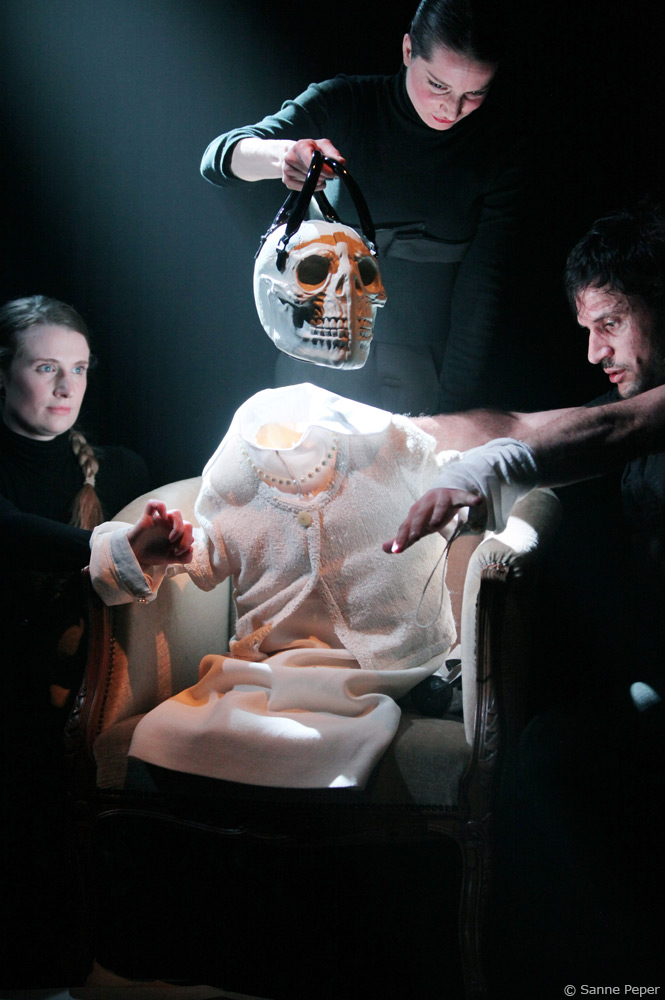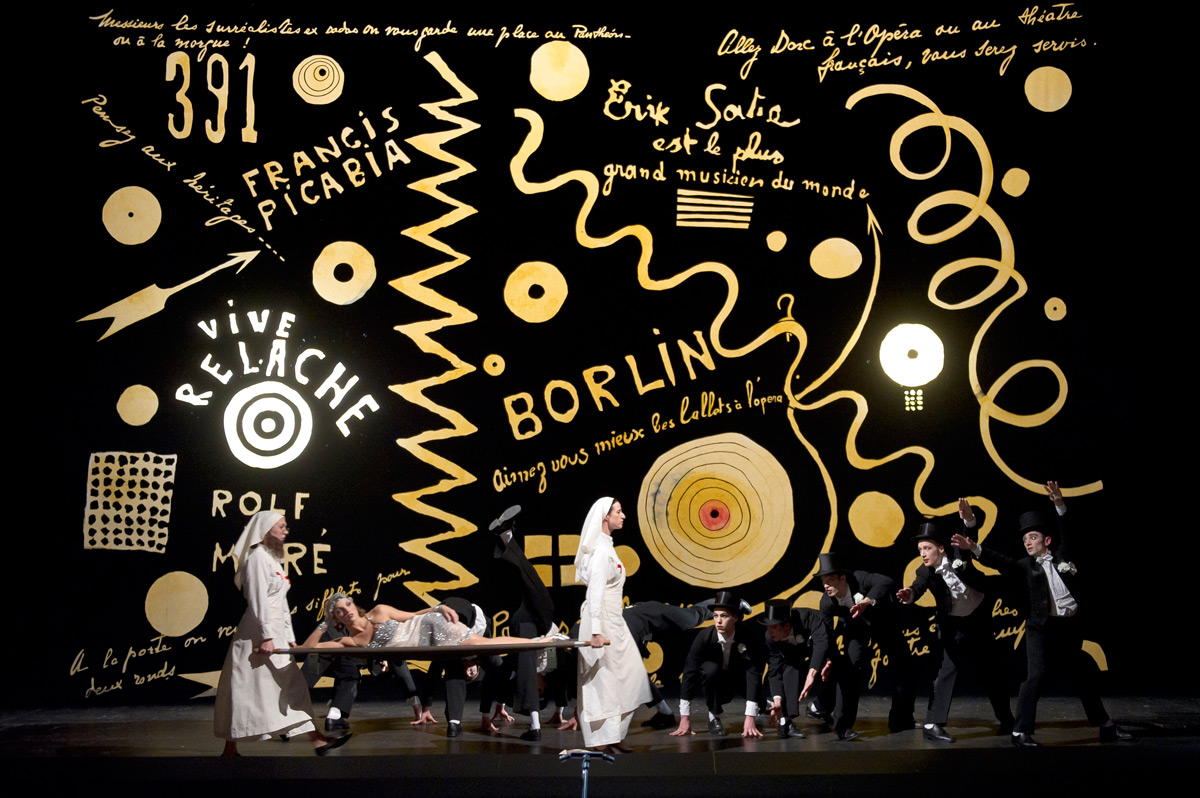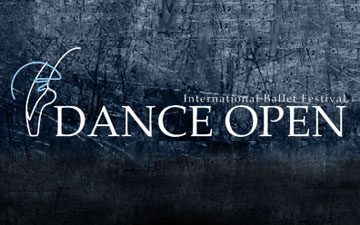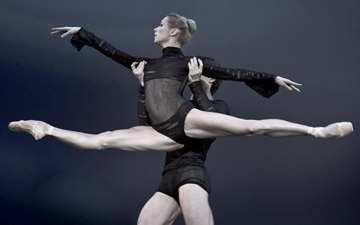
International Festival of Arts ‘Diaghilev. P.S.’
St. Petersburg
28 November – 1 December 2017
www.diaghilev-ps.ru
The Diaghilev Festival in St Petersburg was inaugurated in 2009, the hundredth anniversary of the first performances in Paris of Diaghilev’s Saisons Russes – the combined ballet and opera performances by artists from the Imperial theatres. The aim of the annual festival is to celebrate Russian influence in international culture, thanks to Diaghilev’s productions in the first two decades of the 20th century, and to reclaim his company of exiles as truly Russian.


© Rick Guest. (Click image for full version)

© Dave Morgan. (Click image for larger version)
I missed the Festival’s first performances, which featured contemporary dance companies from Holland, Norway and Sweden, and joined for the conference and final performance by the Ballet de Lorraine. Not speaking Russian, I had to listen to the conference presentations in translation, hoping to get a sense of how the Ballets Russes’ heritage is regarded by today’s Russian academics.

© Sanne Peper. (Click image for full version)
A central topic was the way Diaghilev’s early productions were (and are) viewed in the West as exotically Russian, coming from a foreign ‘Oriental’ culture. Léon Bakst’s theatrical costumes influenced fashion designers in Europe and America, affecting the way women dressed in harem pants, sultana skirts and turban headdresses. His colour palette, using blue with green, red with purple, orange with pink, can be seen in couture collections today by designers for the firms of Christian Lacroix and Roberto Cavalli, among others. Elena Beskpalova, art historian and author of ‘Bakst in Paris’, spoke of her research uncovering the secrecy of Bakst’s commercial dealings with Parisian couturiers Paul Poiret and Jeanne Paquin.
A pair of literary and art history academics, Olga Ushakova and Elena Yushkova, examined the impact of Ballets Russes productions on T.S. Eliot’s poetry and plays. He frequently attended ballet performances during their London seasons in 1918 -1919, and Stravinsky’s Le Sacre du printemps apparently influenced ‘The Waste Land’ (1922). Thus, according to the speakers, ‘the Russian virus infected modern English literature’.

©/courtesy International Festival of Arts “Diaghilev. P.S.”
The influence of Russian ballet teaching on companies around the world was discussed, with special mention of the English schools set up by Marie Rambert and Ninette de Valois. The diaspora of dancers from the various Ballets Russes de Monte Carlo companies established after Diaghilev’s death is the subject of Michael Melak’s recently published book ‘Behind the scenes at the Ballets Russes: stories from a Silver Age’, translated by Rosanna Kelly.

© and published by I.B.Tauris.
The day-long conference ended with the showing of a new documentary film, ‘A Merchant at all times – the virtual museum of Sergei Diaghilev’. Made to celebrate the 145th birthday of Diaghilev (31 March 1872), the film ends with a lament that there are no actual museums or monuments in Russia devoted to the great impresario. Attempts have been made to reclaim some of the ballets lost to the Soviet Union: former dancer Andris Liepa started ‘recreating’ some of the Fokine ballets, familiar to the West, in the 1990s. In the documentary, Nikolai Tsiskaridze, now rector of the Vaganova Ballet Academy in St Petersburg, speaks about the Ballets Russes repertoire. It comes as no surprise that excerpts from Diaghilev-era ballets feature himself in Le Spectre de la Rose, as the Golden Slave in Schéhérazade and as Nijinsky’s Faune. Not altogether convincingly, it must be said.
Teaser for the film ‘A Merchant at all times – the virtual museum of Sergei Diaghilev’.
The documentary, in Russian with English subtitles, makes the point that Diaghilev was a consummate expert at ‘merchandising’ – an early public relations impresario. He and his star dancers became international celebrities (as did Anna Pavlova). The modern impresario Sergei Danilian, whose company Ardani Artists was responsible for Kings of the Dance and Diana Vishneva’s Dialogues, was feted during the Festival with an exhibition in the Sheremetev Palace. It was evident at the sole Amore performance in St Petersburg that Svetlana Zakharova, who started her career with the Mariinsky Ballet before moving to the Bolshoi, is regarded as a Russian celebrity (though she is Ukrainian by birth).

© Laurent Philippe. (Click image for full version)
For me, a highlight of the Festival had nothing to do with the Ballets Russes. It was a recreation of Relâche, the 1924 Dadaist production by the Ballets Suédois, performed by the Ballet de Lorraine. As far as artistic director Petter Jacobsson knows, this is the first well-researched account of Relâche, made with the participation of Carole Boulbès, a French specialist in avant-garde art, who contributed a conference paper on the original ballet. Rolf de Maré’s Ballets Suédois couldn’t compete for long with the Ballets Russes, but Relâche is evidence that its productions caused just as much controversy. My review of the production follows.

















You must be logged in to post a comment.